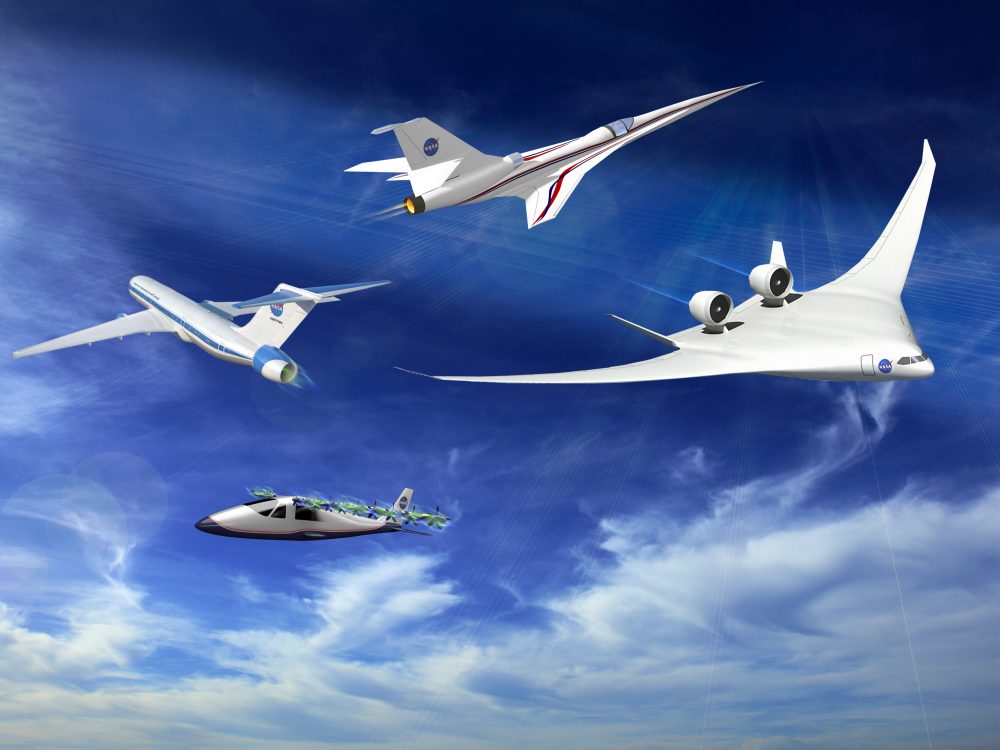
Image credit: NASA
While many Americans rely on the aviation industry, whether for their livelihood or for travel, it may come as a surprise that the basic shape of the aircraft we fly today hasn’t changed for forty years. Entirely new aircraft designs will define tomorrow’s competitive aviation landscape, but that will require huge upfront investment for research and development. For the U.S. to take the lead in the aircraft industry, we’ll need public investment in early stage research for the development of revolutionary aircraft technologies.
The aircraft industry has been key a component of America’s economic and industrial power since World War II. Today, the industry feeds our economy with over a half-million high-skilled jobs.
The size of the global aircraft market is steadily growing, and foreign competition continues to strengthen. As Europe rebuilt after World War II, the idea of a cooperative Euro-aircraft industry to compete with the U.S. evolved into a cornerstone of various governments’ economic strategies Even now, the Chinese, Russian and Brazilian governments are working to develop their own regional and intercontinental jetliners.
The evolving aircraft market has the potential to create $10 trillion in economic value over the next 17 years along with a strong pipeline of new engineers, technicians and mechanics. How can the U.S. grab a stronger foothold in this important market?
The National Aeronautics and Space Administration (NASA) furnishes the foundational research needed to leapfrog the aircraft fielded by international competition. NASA is in the final stages of designing and testing five new experimental aircraft (or X-planes) that will, respectively, fly beyond the speed of sound without generating disruptive sonic booms, reduce fuel usage by upwards of 50 percent and prove the practicality of electric propulsion for air transport.
To revitalize American aviation competitiveness and excellence, I reintroduced the Aeronautics Innovation Act (H.R. 3033) with fellow Congresswoman Marcy Kaptur of Ohio. We both recognize this is a race we can’t afford to lose. Our bill codifies each of these X-plane programs, provides consistent funding to see them through to completion and assures our “first-mover” advantage in new advanced industries.
The bill encourages NASA to pursue innovation in unmanned aircraft systems and small, individually operated vertical takeoff and landing aircraft. The former is projected to produce an economic impact of $82 billion and 100,000 jobs by 2025. The latter will fundamentally change the way people and goods move in metropolitan areas.
This bill affirms NASA’s fundamental role in high-risk, high-reward aerospace technology development. Historically, early-stage research has been the domain of the federal government. In advanced sectors like aerospace, where no great leaps take place without tens of billions of dollars in research and development, only a government can write checks that big. And they do with the full understanding that those investments will pay off.
In the last century, Americans invented the airplane and brought about the global age of air mobility. The Aeronautics Innovation Act ensures we will continue that commitment and maintain America’s place as the world leader in aviation.
Rep. Steve Knight represents California’s 25th district. Originally posted at GE Reports.
Filed Under: Aerospace + defense




